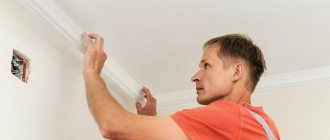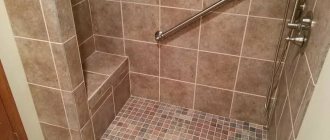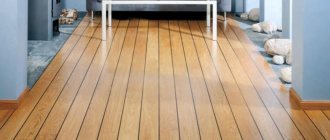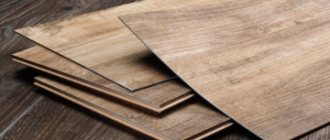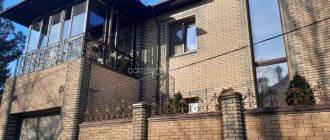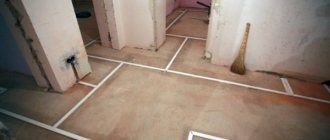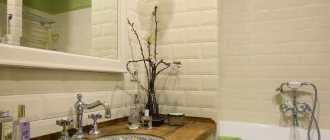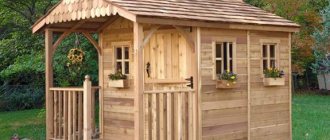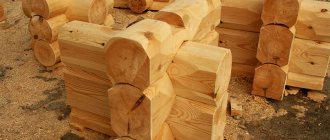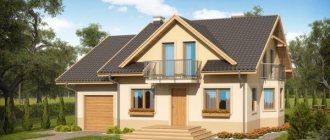Home / Types of ceilings / Suspended ceilings / What are acrylic ceilings?
In an effort to give the ceiling design maximum individuality, designers are constantly looking for new materials and finishing methods. Acrylic ceilings have become one of the most unusual and unique design types.
How to make a backlit polycarbonate ceiling
The traditional area of application of polycarbonate is greenhouses and greenhouses. For these buildings, the combination of transparency and good thermal insulation is important, and the material, while slightly inferior to silicate glass in the first characteristic, is significantly superior to it in the second.
Polycarbonate ceiling
No less often, polycarbonate is used for the construction of canopies, roofs of gazebos, terraces, and so on. But they began to sheathe the ceiling with it relatively recently.
Suspended ceiling: design features
Polycarbonate sheets look like transparent, colored or unpainted slabs of different thicknesses, solid - monolithic, or with partitions inside - honeycomb. Using them as a finishing material in an apartment seems a dubious idea.
However, polycarbonate is successfully used for glazing complex roofs, not only in greenhouses, but also in office, industrial, and residential buildings. In these cases, the material replaces glass.
Polycarbonate plays the same role in suspended ceilings.
- Suspension system is a structure made of a metal flat frame, which is fixed to the base ceiling using hangers. The frame is hemmed from below with finishing materials, or decorative sheets are placed on top in a cell of the frame. The latter option has become widespread under the name “Armstrong” system and is a more advantageous modification: there is always access to communications.
The materials used for the boards are glass, mirror, plastic, mineral fiber, cellulose, fiberglass and so on. As a rule, glass panels are installed in cases where the light sources are mounted on the base floor, and the panel acts as a lamp.
Judging by the reviews, nothing prevents you from using a polycarbonate slab instead of glass. The photo shows the hanging system in the apartment.
Features and Tips
Acrylic glass is very easy to bend if you heat it locally at the bend. Do not use open fire for this - it will quickly melt the plastic. It is better to use a special construction hair dryer.
LED strips are quite expensive and they are not always affordable. In this case, you can use fluorescent lamps. They cost much less and are easy to install. If you attach a white backing to the ceiling or simply paint it white, the illumination of the canvas will be more uniform.
It is easy to apply any designs to plastic. To do this, you can use special printers or use paints. By choosing the appropriate pattern, you can assemble an imitation of a stained glass ceiling.
Materials for ceilings with lighting
Both monolithic and cellular polycarbonate are used in this embodiment. The first, painted in the appropriate color - milky, golden, provides better light dispersion. Cellular is lighter, and thanks to the longitudinal section of the honeycomb, it can create additional lighting effects. For example, slabs can be laid with your own hands, alternating the direction vertically, horizontally or diagonally.
If the ceiling is hemmed with material, for example, in a garage, then cellular is chosen due to ease of installation and lower cost. Both plates have the same moisture resistance and are easy to clean. When installing in a garage, you should pay attention to the markings: judging by expert reviews, slabs made of self-extinguishing polymer are preferable.
For illumination, fluorescent, metal halide and LED lamps are used. Polycarbonate is resistant to high temperatures and does not suffer from heating the lamp. But its light transmittance, especially that of painted glass, is 10–20% lower than that of glass, and therefore the power of the devices must be “reserved.”
The material is produced not only in color, but also with ornaments. It looks very decorative, but transmits light even worse. When choosing lamps for illumination, this point is also taken into account. The photo shows a patterned ceiling.
Installation technology
If the hanging system is being built in a bathroom or toilet, then it can be sheathed entirely with polycarbonate: the area of the room is small, the lighting fixtures are used with low power. If some of the slabs are made opaque, the lighting will be insufficient. The photo shows an option for the bathroom.
If you install the hanging system yourself throughout the apartment, it makes sense to combine polycarbonate slabs with opaque ones - made of mineral fiber, metal, mirrors, and so on. In the garage or on the terrace, lighting is not provided, and the color is chosen arbitrarily.
- For better light reflection, the base surface is painted with white or silver paint.
- The wall and base ceiling are marked according to the dimensions of the slab. Standardly it is 60*60, 120*60 cm and so on. However, there may be other sizes, and even a shape - a hexagon, for example.
- An L-shaped profile is attached to the wall along the marked line.
- Suspensions are fixed along the lines on the ceiling - no less than every 1.2 m.
- The frame is assembled from the main guides, longitudinal and transverse. The profiles are connected to each other with locks.
- Electrical wiring is installed on the base ceiling, and lighting devices are installed. In an apartment, fluorescent tubes or LEDs are usually used.
- The material is cut to the size and shape of the cell. The ends of the panels are covered with tape to prevent moisture and dirt from getting inside.
- The slab is placed in the cell on top. No fixation required.
In the video you can see how to build a ceiling in an apartment with your own hands.
Source: https://propolikarbonat.ru/potolok-iz-polikarbonata
What should not be used for finishing
Not every material meets the criteria, and therefore is not suitable for use in a damp room. In order not to negate all your efforts and spoil the repair, you should discard the following materials:
- Whitewashing, plaster. Categorically not suitable for use in the bathroom: it reacts poorly to dampness, needs periodic updating (otherwise it becomes a haven for mold).
Plaster Source design-homes.ru
- Chipboards. They are sensitive to dampness, which is why they become deformed and lose their appearance. Some species have noticeable emissions (they release formaldehyde, which is toxic to humans).
With oriental notes Source i.pinimg.com
- Paper wallpaper. Inevitably they begin to absorb moisture, swell and peel off. If you don’t want to give up wallpaper, choose the option with a non-woven base.
Panel finishing (siding) Source rtl-indizajn.cdn.sysbee.net
- Oil paints, enamels. The highest quality composition will not tolerate excess moisture; over time it will begin to fade, become cracked and crumble.
Ceiling of complex shape Source cdn.archilovers.com
See also: Catalog of companies that specialize in interior redevelopment
The nuances of installing polycarbonate ceilings with lighting
Polycarbonate and its areas of application are currently not known to many. Some knowledge about the material can be shared by people who are owners of country houses such as gazebos and terraces. Comparing its transparency with silicate glass, with the naked eye one can notice the advantage of the second option. But in terms of thermal insulation properties, polycarbonate proves its superiority. They also resort to using these slabs for arranging the roofs of terraces and gazebos, as well as for constructing canopies.
Of particular interest is the creation of ceilings. This idea began to be implemented relatively recently. The most original layout can now be confidently called - a polycarbonate ceiling with original lighting.
How to keep a plastic ceiling clean
In the bathroom, the ceiling should always be as clean as possible, so as not to breed dirt, mildew, or mold. Materials such as plastic panels are generally not conducive to mold growth, but they still require maintenance. With proper and systematic care, a plastic ceiling will last for many years.
When cleaning a plastic ceiling, it is prohibited:
- using abrasive cleaners, as they will easily scratch the plastic and erase all the gloss;
- sharp objects and brushes with hard bristles should not be used;
- when washing a plastic ceiling, do not put too much pressure on it, because such material is fragile and dents may occur;
- Do not use acetone under any circumstances, it corrodes plastic panels.
Components of a suspended ceiling
Polycarbonate is an interesting material with its own unique properties and characteristics. Most often found in the form of transparent, unpainted and colored slabs. It is worth noting their structure. Its first option is a solid formation, called monolithic polycarbonate. The second structure is characterized by internal partitions (honeycombs). Such plates are called cellular polycarbonate.
The layout of the ceiling made of polycarbonate sheets was initially poorly understood and raised a lot of doubts. However, overcoming the contradictions that arose, they proved their reliability and quality during the installation of the roof. And not only in greenhouse structures, but also in buildings used for industrial and commercial purposes. There are plenty of examples of installing canvases on residential buildings. And the explanation for the latter is a high-quality replacement of another material - glass. In a suspended ceiling, the role of polycarbonate is similar to the above details.
Installing a ceiling covering with your own hands is a multi-stage job. To begin with, the foundation is built - a frame structure. Its main task is to “support” polycarbonate slabs. The material is either securely attached to the frame, or the elements are placed into the formed cells. Laying the slabs on top gives the advantage of hassle-free access to utility lines.
A suspended ceiling is a collection of slabs, which in some cases may consist of different types of building materials. A sheet of glass, in turn, acts not only as a ceiling surface, but also acts as a light source, transmitting rays from the lamp through itself. The device itself is installed on the base ceiling plane. As mentioned above, polycarbonate becomes an excellent replacement for glass. Based on this, this property of the material makes it possible to create a suspended ceiling with lighting.
Price
The price of such structures for each specific room can vary significantly. The most important influence on the cost is the area of the ceiling surface: the larger it is, the greater the number of fasteners, wall corners, and load-bearing elements will be needed. The quantity of the main material - polycarbonate sheets - also has a great influence on the pricing of ceilings. For example, monolithic material costs about 650-700 rubles per square meter, cellular material is much less: from 120 to 500 rubles for the same meter.
vote
Article rating
How to make a polycarbonate ceiling with your own hands
Polycarbonate appeared on the construction market a long time ago and has already established itself as an excellent roofing material for arranging hanging structures, gazebos, terraces and canopies. However, designers began to use it as an interior element when designing apartment ceilings only recently. Thanks to a number of decorative and design features, polycarbonate panels have become widespread as interior decoration. The rest of the article will describe in detail the qualities of the material and instructions for assembling ceilings using it.
Main characteristics and requirements
Features of the material that must be taken into account when choosing are:
- Waterproof . Since the bathroom is a room with a high level of humidity, the material must be waterproof. It should easily withstand splashes on the ceiling and accidental floods from neighbors above without any problems.
- Durability . Of course, no one wants to do complex repairs every six months.
- Easy to care for . Of course, most will prefer a ceiling that is easy to clean. The best option is to simply wipe the surface during cleaning.
- Price . An ideal option if the quality of the material matches the price.
- Appearance . The attractiveness of the interior also plays an important role.
Features of ceiling cladding with cellular polycarbonate
Constructing a suspended ceiling from cellular polycarbonate with your own hands is a job consisting of several stages. The first step is choosing panels. The material is produced in two varieties:
Cellular polycarbonate consists of two outer sheets of polymer raw materials, fastened with stiffeners made of the same plastic, which form voids (honeycombs). This type of panel is available in various thicknesses, both unpainted and colored.
Monolithic polycarbonate sheets are made in glossy and matte, transparent and colored. Outwardly, they are very similar to glass, but lighter and stronger.
Advantages and disadvantages
Polycarbonate ceiling construction has a number of positive and negative qualities.
The advantages of the panels include:
- The raw materials for the manufacture of parts are absolutely moisture resistant. This circumstance allows the material to be used in “wet” areas such as sanitary facilities, showers, baths and swimming pools.
- Polycarbonate panels are translucent, which means they can be used to create interesting decorative ceiling solutions using lighting fixtures.
- The color palette of the sheets also does not limit the design.
- Thanks to its cellular structure, polycarbonate is lightweight, which practically does not load the floor.
- The material has thermal insulation characteristics due to the hollow elements inside, which reduces heat loss in the room.
- Polycarbonate sheets are easy to bend, so they are used to create wavy surfaces.
- No special skills or tools are required to work with the panels.
- Relative cheapness of the material.
- The plastic used to make sheets is easily susceptible to mechanical damage. It is for this reason that the panels are sold in plastic film, which is not recommended to be removed until installation is complete.
- Polycarbonate melts quite easily, so installing a heat source in close proximity is prohibited.
- The material is temperature dependent. As the microclimate in the room changes, the sheets contract and expand. Taking into account this nuance during installation, it is recommended that the panels are not attached too rigidly to the base.
Installation of the structure
The polycarbonate ceiling is a suspended structure fixed to the floor slab. For installation you will need the following materials and tools:
- screwdriver;
- self-tapping screws;
- construction knife;
- metal hangers;
- aluminum profiles;
- locks for aluminum profiles;
- polycarbonate panels.
Source: https://potolok.expert/otdelka/potolok-iz-polikarbonata.html
Tiled suspended ceilings with lighting - plexiglass, polycarbonate, .
I'm trying to figure out the possible material options for the transparent panels of a suspended tile ceiling. I'm going to put lights behind some of them. In appearance (tiles, not guides), I would like to get something like
- " > , only illumination preferably from the inside
- » >
- » >, excluding mirror tiles.
The problem is standard - I can’t decide on all the shortcomings of the solutions and choose the final option. Maybe someone has encountered a similar question and chose one of the options (or maybe some other thread)? Maybe someone has just worked with such materials and is aware of their applicability? One more question: how suitable are these materials for sliding doors with a top hanger with a thickness of about 6-8 mm (one piece or broken into sections)?
I took all the plastic from " > , since they have the most information on them and I can only find their representative at home.
Price aspect Prices are taken from the website in terms of one 600x600 mm tile. 1. Cellular polycarbonate (4mm, milky). Price
$2/piece 2. Monolithic polycarbonate (3mm, milky). Price
$11/piece 3. Molded plexiglass (Plexiglas GS, imported, 3mm, milky, matte). Price
$9/piece 4. Frosted molded plexiglass (Plexiglas Satinice SC, 3mm, milky). Price
Standard ministove AMF costs: economy
$1.5/piece – Mineral (Ecomin) average price range
$3-4/piece – Mineral (Thermatex)
The price range is more than respectable.
Please safety 1, 2. Cellular polycarbonate 4mm (milk) and Monolithic polycarbonate. It is claimed that plexiglass is better from the point of view of fire. security. 145-155C “Another important characteristic is fire resistance. Polycarbonate is classified as a self-extinguishing material. The combustion of polycarbonate is not accompanied by the release of toxic substances, unlike other plastics. Due to the low coefficient of linear expansion, the sheets can be profiled taking into account temperature differences. For the installation of cellular polycarbonate, special polycarbonate profiles are used, which have the same color range and the same mechanical properties. They are very easy to assemble and create the appearance of a solid structure."
Tips for a plastic ceiling in the bathroom
In order for the plastic ceiling in the bathroom interior to look beautiful and last longer, it is worth considering some recommendations from experts:
- For the ceiling in the bathroom, you should choose plastic that has a thickness of at least 8 mm.
- All material must be taken from only one batch, because there is a risk that another batch may be of a different shade.
- For the bathroom, it is best to give preference to plastic panels in light colors.
- White plastic will visually expand the bathroom.
- For a small bathtub, you don’t need to use profile guides.
- It is best to attach the starting profile only to 3 sides of the bathroom, this will make it easier to do the entire installation of the ceiling.
- For lighting devices, it is necessary to carry out parallel wiring from short to short.
- Self-tapping screws should be attached directly through the entire plastic panel, as close to the wall as possible.
Advantages
The industry produces polycarbonate in the form of slabs of different designs, thicknesses and colors. There are two types of material:
- monolithic (solid) – single-layer panel;
- cellular (cellular) - consists of several layers fastened with jumpers.
The ceiling can be made from different types of polycarbonate, cellular or monolithic.
Although you can buy panels that are transparent and colored, matte and unpainted, until recently it never occurred to anyone to use them for interior decoration of residential premises. But since such sheets are successfully used for glazing roofs of complex configurations for agricultural buildings, offices, industrial and residential buildings, they can be used when installing roofs indoors, constructing original suspended ceilings.
It is permissible to use both types of material for such purposes. Panels on the ceiling can be laid in a pattern in different directions, alternating vertically or diagonally.
It should be taken into account that:
- the monolith is usually painted in a certain color - white, golden, which allows it to diffuse light more evenly;
- Cellular is lighter, and using internal voids, it is possible to obtain original lighting effects.
Cellular is more suitable for covering the ceiling in a garage, it is easier to work with, and the cost of the material is low. It is also recommended to select slabs with improved sound-absorbing characteristics.
Components of the structure
Suspended is a system assembled from several slabs, and the elements can be different materials.
We list the main components of the design:
- The metal flat frame is attached to the ceiling using special hangers.
- The bottom of the frame is sheathed with decorative materials: they are secured with fasteners or the panels are placed in special cells (the famous “Armstrong” system). In the latter case, it is possible to run all communications above the ceiling and quickly reach them if necessary.
The most common finishing materials are:
- glass or plexiglass;
- mirror;
- plastic;
- mineral/cellulose fibers;
- fiberglass.
When laying a polycarbonate ceiling, you should carefully follow the diagram
Glass or fiberglass is used in cases where light sources are mounted on the ceiling above the frame, then the finishing sheets also perform the functions of lamps. Nothing prevents you from using stronger and more reliable polycarbonate instead of glass.
The lighting is provided by fluorescent, metal halide and LED lamps. If you use polycarbonate that is colored or decorated with patterns, you should take into account that the transparency of such material is low - 20% less than that of glass. In this case, the power of the light sources is selected higher.
Conclusion
- For budget-friendly, durable, practical and neat repairs, PVC panels are suitable. You can install them yourself; they do not absorb moisture and are easy to clean from dirt. To replace a damaged element, you do not have to dismantle everything. It will be enough to replace a few slats.
- Tension fabric will cost more, but it has more advantages than plastic panels. The canvas will protect against flooding, looks better, you can hide unevenness under it, and install built-in lamps. A film with a glossy surface will also enlarge the room.
- Drywall is for those who are not afraid of labor-intensive installation. You can create intricate shapes from it. In other respects, gypsum boards are inferior to suspended ceilings. Although you can also hide communications under it and make lighting.
- Suspended structures look good and are moisture resistant, but they are more difficult and expensive to install.
Mirror and wood finishes are not as practical as the listed materials; they are usually expensive and require difficult maintenance.
Stage-by-stage execution of work
To get a beautiful ceiling, you need to follow certain rules during installation. We list the main stages of work:
- First, it is recommended to paint the “basic” ceiling in the room with white (preferably silver) paint. This approach will significantly increase the reflective ability of the surface, allowing more light to be directed towards the suspended ceiling.
- Markings are applied to the side walls and the base surface, taking into account the dimensions of the polycarbonate sheets. The standard sizes are 60x60, 120x60 cm, etc. However, other sizes are also found. In addition, the panels can have a complex hexagon shape, etc.
- An L-shaped profile is attached under the ceiling along the perimeter of the room at the required height (along the intended line).
By attaching L-shaped profiles to the ceiling, the base of the polycarbonate ceiling frame is formed - The hangers are installed according to the markings; they should be located 1.2 m apart from each other.
- A frame is assembled on the ceiling from the main guides, longitudinal and transverse slats. All parts are secured with locks.
- Electrical wiring lines are run along the ceiling above the frame and light sources are installed. For residential premises, LEDs or fluorescent tubes act in this capacity.
- Polycarbonate is cut into fragments with a construction knife according to the size and shape of the frame cells. If cellular polymer is used, the ends of each panel are sealed with tape to prevent moisture and dust from getting inside.
- Fragments of material are mounted in cells.
The nuances of installing the backlight
Here are some recommendations given by experienced craftsmen.
The hanging system in a bathroom or restroom should be completely decorated with polycarbonate. Typically, the area of such a room is small, and minimal lighting is used. It is better to take completely transparent slabs, otherwise the lighting will have to be increased.
Small rooms should be completely decorated with lighting on a polycarbonate ceiling
For suspended ceilings in an apartment, it is worth combining polycarbonate sheets and opaque panels - metal, mirror or mineral fiber.
In the garage or on the veranda, decorative lighting is unnecessary, so the color of the panels can be chosen to suit your taste.
A beautiful ceiling made of polycarbonate slabs with lighting will give any room a unique, sophisticated style. The effect of multi-colored scattering rays of light will evoke joy and positive emotions, calming and relaxing after a hard day.
Source: https://polikarbonat.guru/montazh/potolok-iz-polikarbonata.html
Polycarbonate ceiling with lighting
Polycarbonate is known as a material for making greenhouses or decorating the roofs of gazebos, but very few people use it when decorating ordinary apartments. However, you can make an excellent suspended ceiling with lighting from polycarbonate. In appearance, the design will resemble a similar glass solution, but will have many more advantages and, moreover, will be cheaper.
Questions and answers
Which ceiling is better from a practical point of view?
From a practical point of view, PVC panels are the easiest to maintain, install and meet all the necessary requirements.
How not to make a mistake when choosing moisture-resistant drywall?
This option is usually marked with the letters GKVL, and the sheets themselves are green.
How long does moisture-resistant drywall usually last?
The service life of GKVL is usually from 5 to 10 years.
Which type of ceiling is most susceptible to contamination and mold?
A simply painted ceiling suffers the most from these problems. From this point of view, this is not the most practical option.
Which frame is better to use?
This depends on the material chosen. Each material places different demands on frames.
To choose the best flow option for the bathroom, you must take into account the characteristics of this room, as well as the requirements that the cladding material must meet.
What kind of material is this
Polycarbonate comes in two main types:
- Cellular, used for the installation of greenhouses and found very often.
- Monolithic, reminiscent of ordinary plexiglass.
Both varieties can be used to design floors. The difference between the types of sheets will be the presence or absence of voids called honeycombs, which give the name to one of the varieties of material.
The honeycomb type has longitudinally spaced voids between two thin sheets of outer surfaces. This type of coating can be produced either transparent or painted in various colors. The thickness of the sheets varies over a wide range.
Monolithic options are most similar to ordinary glass. However, polymer parts are much stronger, although they are much easier to process. In addition, you can choose both the thickness of the sheets and their type - there are matte, transparent and painted options.
Pros of the solution
Unlike glass, which is also used to create luminous surfaces, this type of coating will cost significantly less. In addition, any of the varieties of this polymer is superior to glass in terms of performance characteristics: the plastic is stronger, is not susceptible to splitting into small pieces, and is also easier to process using the simplest tools.
At the same time, the polymer coating is not subject to rotting, can withstand quite significant temperature changes and does not react in any way to moisture. This makes it possible to use such coatings when decorating both the interior of a house and for decorating structures outside it. This property is especially useful when decorating rooms in which the temperature is not constantly maintained in the positive zone.
Another advantage of plastic is its light weight. The assembled composition will not increase the load on the floors too much and will be easier to install than a similar solution using glass parts. But, despite its light weight and minimal cost, plastic is not inferior to glass in transparency.
Varieties of compositions
There are several types of solutions that can be assembled from such materials. Honeycomb, with voids between the outer and inner planes, provide a very beautiful dispersion of light rays.
Monolithic sheets can be made with either a transparent or matte surface, which also provides good dispersion. Both types of materials can be selected by color - there are many color options for the material.
Which ceiling to choose
Each of the described options is attractive in its own way, but if you take into account the optimal ratio of cost, decorativeness and ease of installation, then the best option is a plastic or slatted ceiling. Thanks to the wide selection of panels, you can find an interesting and unusual combination of color and texture, or, conversely, choose a discreet classic option. If the bathroom is decorated in a high-tech or loft style, panels with a mirror finish, as well as chrome and metallic colors, are ideal. This is a great opportunity to show your imagination and feel a little like a designer.
Wavy slatted ceiling
Installation nuances
Installing a backlit polycarbonate ceiling is quite simple, thanks to the possibility of using frames designed for Armstrong-type ceilings. Moreover, the installation of a structure made of cellular or monolithic polymers is practically no different from the assembly of Armstrong-type solutions.
Unlike the installation of opaque compositions, polycarbonate structures will require specific preparation of the base. It consists in the need to paint the floor plane, which will be inside the structure, in a light color. This is necessary so that the inner plane acts as a kind of reflector.
If lamps that generate a lot of heat are used for illumination, it is necessary to ensure that they are mounted at a sufficient distance from the surface of the coating. Although this type of polymer is classified as self-extinguishing, the melted surface will not be a good decoration for your ceiling.
When using cellular plastics, you need to understand that their internal structure will be visible when the backlight is turned on. Usually, the longitudinal structure of the honeycomb even allows you to decorate the ceiling, giving it an interesting look and helping to diffuse the light ceiling, however, such solutions are not always appropriate. Sometimes, it is better to opt for monolithic plastics with a matte surface.
Source: https://wikipotolok.com/potolok-iz-polikarbonata-s-podsvetkoj/
Installation details
Installation of a polycarbonate ceiling with lighting is not difficult. But unlike the installation of opaque compositions, the installation of a polycarbonate structure requires certain preparation of the base. It is necessary to paint the inner surface of the ceiling in a light color. This technique is necessary to allow light to be reflected from the internal plane.
When using powerful lamps for illumination, the entire coating structure is attached at a greater distance than usual.
The longitudinal honeycomb structure gives the ceiling an unusual appearance when the light is diffused. But such solutions are not needed in all cases. Most often, monolithic polycarbonate of different colors is used on the ceiling in residential premises. It is cheaper than glass and looks festive.

